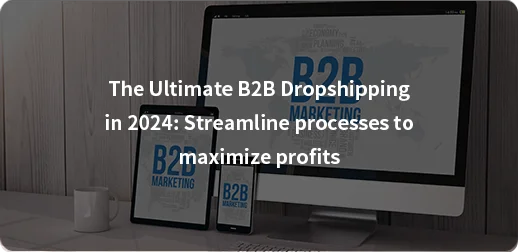As an online business, you will be dealing with a lot of customer interactions such as reviews, complaints, and suggestions.
One common interaction you’ll be having is managing product returns.
When customers are not satisfied with the products they receive, they will most probably return them to you and the manner you handle this return heavily determines how customers will perceive your brand — brand image.
Poor returns management can result in losing customers, both potential and current, damaging the brand trust you have worked hard to build, not to mention the increased operational costs.
Now you know that designing an efficient plan for your returns management process is crucial, the question then is, how do you develop one?
This article has all you will need to know about designing your returns management process so just sit back, grab your notes, and read through.
What Is Return Management
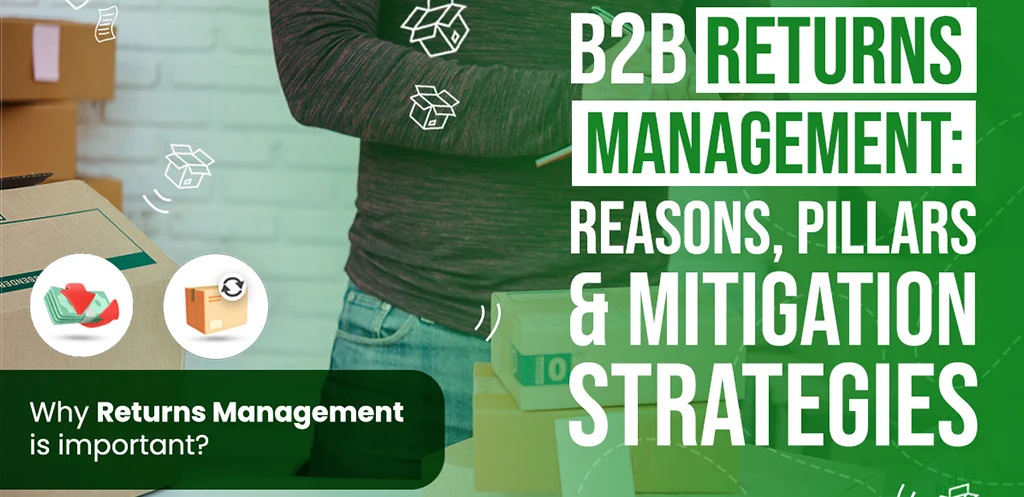
In the online shopping context, returns management is the process of dealing with products that customers don’t want or that are damaged.
The goal is to send these items back to the seller (you), who then gives the customer a refund, exchange, or store credit. It is an integral part of the post-purchase process.
Returns management involves figuring out how to deal with returned items to get the most value out of them.
It’s like a treasure hunt because you have to find ways to resell, recycle, or fix up returned items. This can end up saving you a lot of money in the long run.
In B2B (business-to-business), returns happen when a retailer sends a product back to the manufacturer.
While not as common as in B2C (business-to-consumer), where millions of items are returned annually, B2B returns still significantly negatively impact business.
According to a 2019 report by Sana Commerce, 44% of B2B buyers complain about online orders from their top ten vendors at least once every two weeks, with 9% complaining daily.
These returns result in substantial losses, reducing profitability, efficiency, and productivity by 6 to 10%, and sales by 1 to 5% on average.
Additionally, there’s a risk of damaging relationships between buyers and vendors due to incorrect products, purchasing, or shipping information, leading to unavoidable returns.
Having a good returns system helps your business recycle and resell products instead of losing them completely when they’re returned.
Since both the returns management pipeline and your normal sales pipeline have similar processes such as customer support, transportation, inventory management, and more, they can just share the same resources thereby limiting costs while keeping your customers happy.
Just make sure your sales pipeline is as efficient as it can be.
Essential Steps In The Return Management Process
Here is a standard pipeline on how returns move from the business’ hands back to you the seller:
- Returns Initiation: The business is dissatisfied with your product and decides to return it.
They can do it through an app, email, or by calling, it all depends on you although returns in an online shop when compared to a physical store might take longer because there are more steps involved.
- The Reverse Logistics: Once you confirm the return request, you then arrange for the item to be picked up either at the customer’s doorstep or at a nearby drop-off location.
The product is then sent back to the distribution hub or fulfillment centre.
- Processing the return: When the returned items arrive, your warehouse staff scan them to inspect their quality.
You will then need to determine why the items were returned before deciding on the next steps.
If the product goes through and passes the quality check, you can put it back into inventory for future orders.
If it doesn’t pass the check, the customer can either be issued a refund or a replacement is approved for dispatch.
- Fix the returned product: Depending on its condition and potential for future use, the product might need to undergo repair to meet quality standards for future orders.
If the issue is with size, fit, or colour, the product is simply returned to inventory with updates made to listings across all sales channels.
If you can’t resell or fix an item, you will have to get rid of it. This means finding the best way to dispose of it that’s both affordable and good for the environment.
This could mean recycling, giving it to charity, or selling it to a liquidator.
The best way to handle all these is to either set up an automated process with a third-party service or, the better alternative: ensure the delivery, warehousing, and logistics service you use for your business also handles returns.
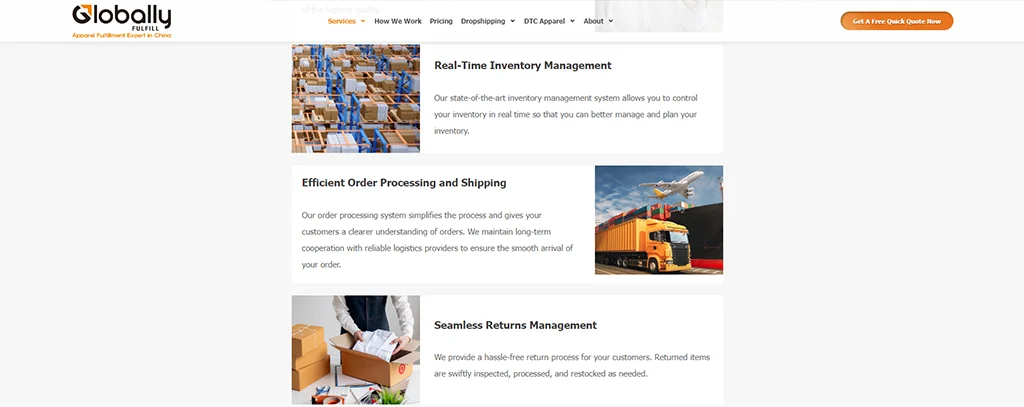
Globallyfulfill is a third-party logistics company that I can recommend for you.
They specialise in warehousing and delivering clothing and apparel. They also provide returns management services so you do not need to spend extra resources setting up a returns pipeline yourself.
Optimising The B2B Returns Process
As consumerism grows and markets become more competitive worldwide, businesses need an efficient returns system to cut costs and ensure their brand stands out to shoppers.
Returns can really affect the profitability, efficiency, and productivity of businesses.
Fraudulent practices like bracketing can cause companies to lose up to 57% of their revenue; this is why designing an efficient plan for your returns management pipeline is important.
To help you get up and running, let’s look at six ways to optimize your returns management process.
1. Work With Data

For you to avoid the stress of unhappy customer businesses and unnecessary returns, it’s important that you know why customers are sending your products back.
Smart retailers leave this to automated systems to track, view, and analyze return data all in one spot.
You should keep track of important return information to figure out which products are being returned the most and why.
This could be because of bad packaging or defects in the product. By improving quality control, you can reduce future returns by catching defective products before they’re sent out.
Analyzing return data can give you detailed insights into every part of the return process. It helps you understand everything from:
– How often each product or group of products is returned
– What percentage of returns are resold at full price or with discounts
– How many returns can be salvaged
– How to make return decisions more efficiently
– The cost of processing each return through different channels.
You can even connect with courier partners, carrier networks, and accounting systems, to collect important data on your customers regarding their behaviour, order histories, returns, refund processing times, and restocking schedules.
This gives a clear view of the return process, helping you make informed decisions and even forecast return patterns.
2. Ensure Your Returns Pipeline Is As Efficient As Can Be
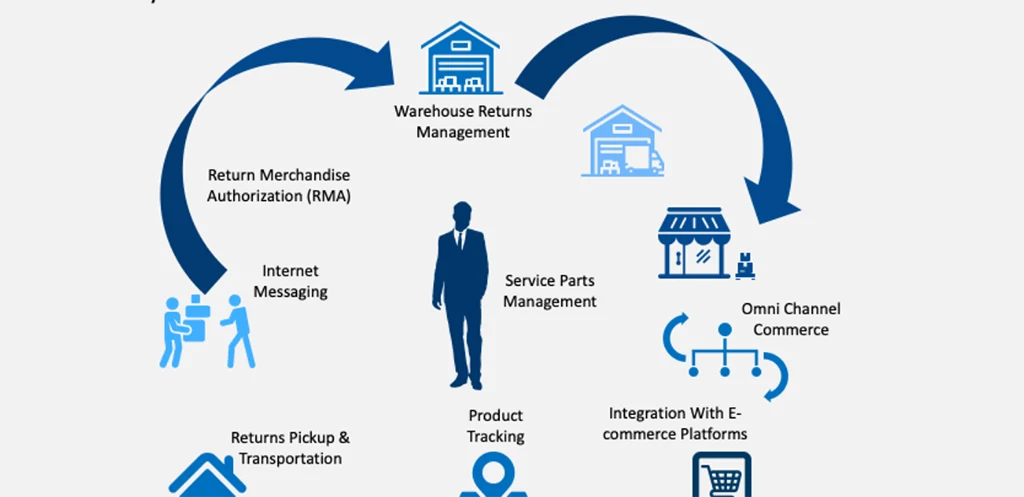
By strategically redesigning your returns process, you can make it easier for everyone involved to see what’s happening and reduce the time it takes for a customer to get a refund or replacement product after requesting a return.
The key to this is automation, you might be seeing a trend here.
The entire pipeline of collecting, transporting, managing inventory, checking quality, making items available again, and recycling or disposing of them properly can all be done accurately and efficiently by automating it all.
To achieve this, having a dependable warehouse management system (WMS) is required. A WMS handles both incoming and outgoing logistics while giving you real-time analytics.
It’s also essential that your WMS integrates seamlessly with your enterprise resource planning (ERP) system.
With this setup, your ERP and WMS work together smoothly, letting you track returns, keep an eye on goods movement, issue credits, and update customer records seamlessly across your integrated systems.
A strong inventory management system will also enable you to monitor your stock levels and adjust business operations to adapt to changing situations.
It also allows you to input and manage data efficiently.
3. Write Clear Return Policies
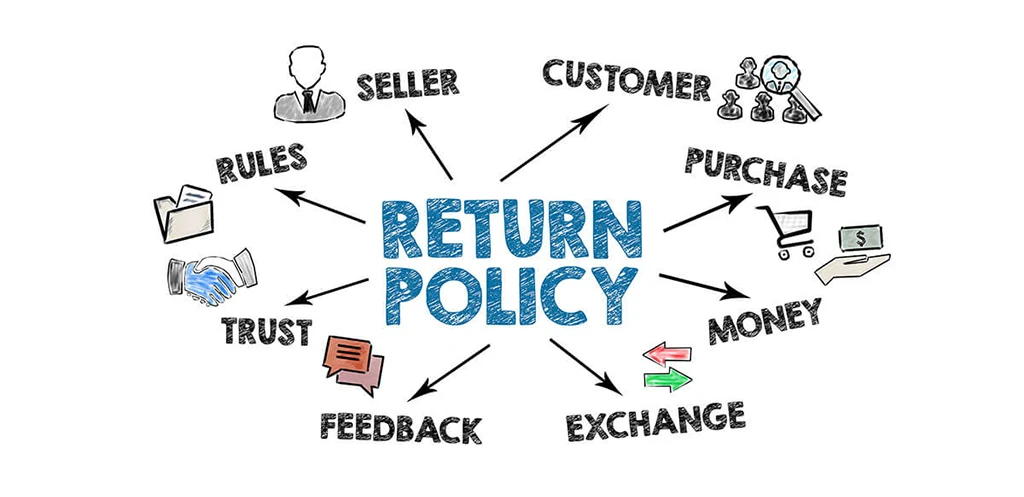
Creating clear and simple return policies and sharing them with customers on all your platforms can save you a ton of trouble and help both the shoppers and your business.
Here’s a brief on writing a useful return policy:
Before crafting a return policy, you will need to understand your store’s requirements and how it handles returns. Here are some key questions to consider:
– How long is the return window for customers?
– What condition must the items be in for returns?
– What types of returns are accepted?
– What are the steps for customers to request a return?
– Are there any fees associated with returns?
Your answers will depend on factors like your expenses, procedures, item worth, clientele, and brand principles. These decisions will shape the terms of your return policy down the line.
Once you’ve settled on your return terms, you should document them. Putting everything in writing can help you organize and fine-tune your return conditions, ensuring you’ve covered all the necessary bases.

Once you’ve determined and documented your return conditions, it’s time to create your return policy. You have two options for this:
- Use a free return policy generator such as ReturnGO’s return policy generator to generate your return policy automatically.
- Input your return policy manually into a template.
If you choose to write your return policy manually rather than using a generator, it’s not too challenging.
Start by finding a free return policy template. This provides a framework that you can adjust to fit your needs.
Customize the template by adding sections relevant to your business and adjusting font styles and colours if needed.
Ensure that all your return conditions are included in a clear and understandable manner. Use headers and bullet points for clarity, and choose a readable font.
Once you’ve drafted your return policy, you’ll need to then review it thoroughly to make sure it’s clear, easy to understand, and aligns with your brand.
Write it using easy-to-understand words and grammar so your customers can quickly go through it and get all they need to know from the entire return process.
Don’t add in jargon most won’t understand and ensure it is not too long.
4. Outsource Your Returns Management Process
Most businesses team up with third-party logistics (3PL) providers for sending out orders, but they manage other eCommerce tasks, like handling returns, themselves.
However, you can improve your partnership by having your 3PL manage returns too.
This way, you benefit from their systems, processes, and knowledge. While most 3PLs focus on outbound shipments, some also offer returns management as an extra service.
You can even add reverse logistics to your outbound delivery process. A good r 3PL provider can help redirect delivery drivers to pick up returns from nearby customers.
When planning delivery routes, don’t forget to include returns. This makes returns faster for customers, improves their experience, and saves resources for your business.
All these and more are services Globallyfulfill provides for their customers, check them out here.
Bonus: Measures To Avoid Returns In B2B
- One of the easiest ways of reducing or even avoiding returns in B2B is to offer precise product descriptions and images. This means giving thorough details about the product’s size, color, and other important features.
Accurate information will help lower returns caused by customers receiving something different from what they expected.
Plus, clear, high-quality images can give customers a better sense of the product’s appearance, cutting down returns due to dissatisfaction with how it looks.
- You can also offer measurement guides on your website to minimize returns caused by sizing problems.
These guides can explain how to measure various parts of the body and include size charts to help customers choose the right size.
- Excellent customer service is probably the most important way of reducing returns. Responding promptly to customer inquiries and addressing product issues can prevent returns.
Being friendly and helpful boosts customer satisfaction, encouraging repeat business and positive reviews.
Conclusion
Although it can incur more expenses, handling returns properly can greatly improve your profits.
Investing in optimizing your reverse logistics network is worthwhile. With the right mix of people and automation, you can speed up processing returned items.
This ensures quicker identification, repackaging, restocking, and resale.
These strategies help create a smooth returns experience for customers and a stress-free process for your business.





